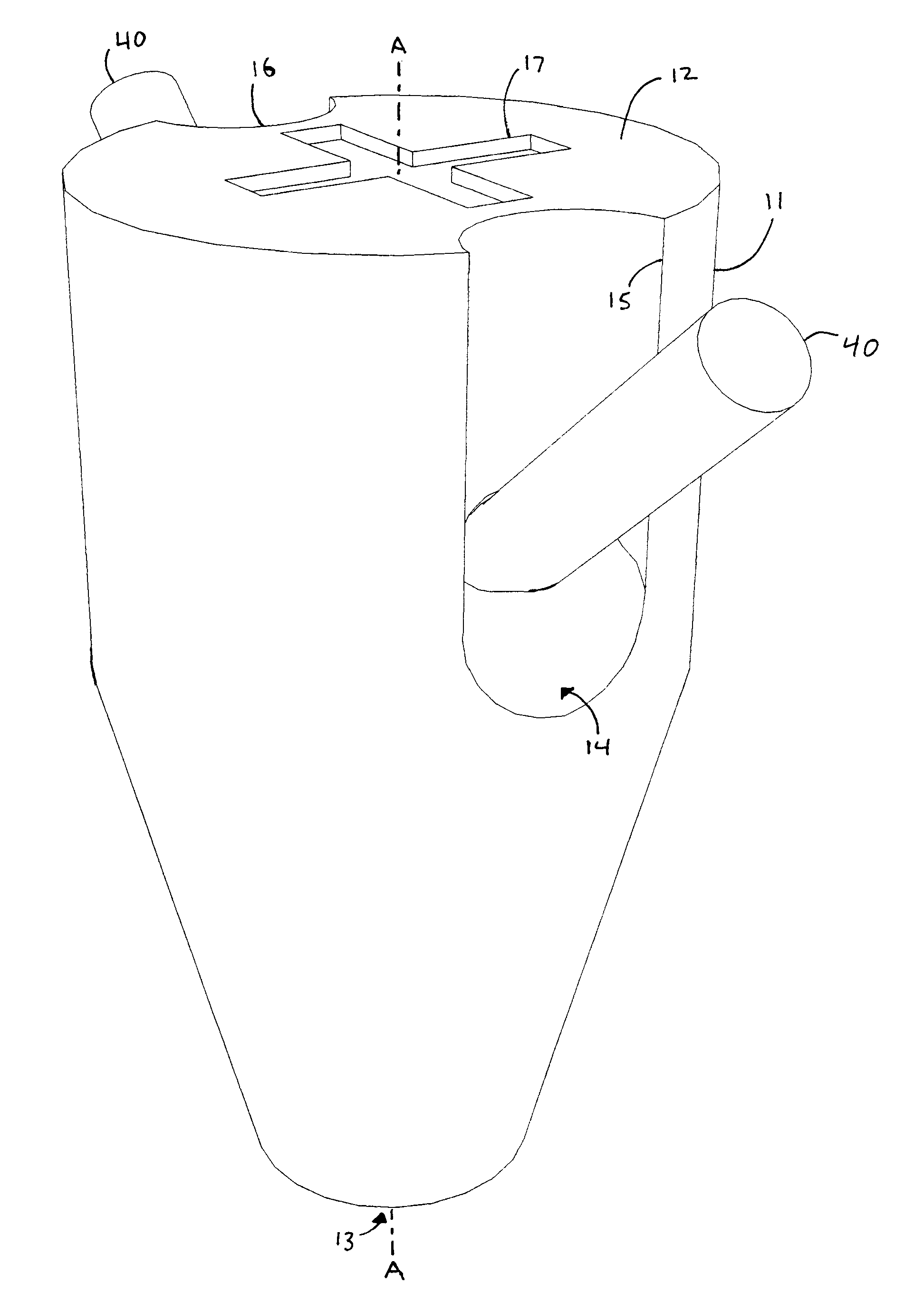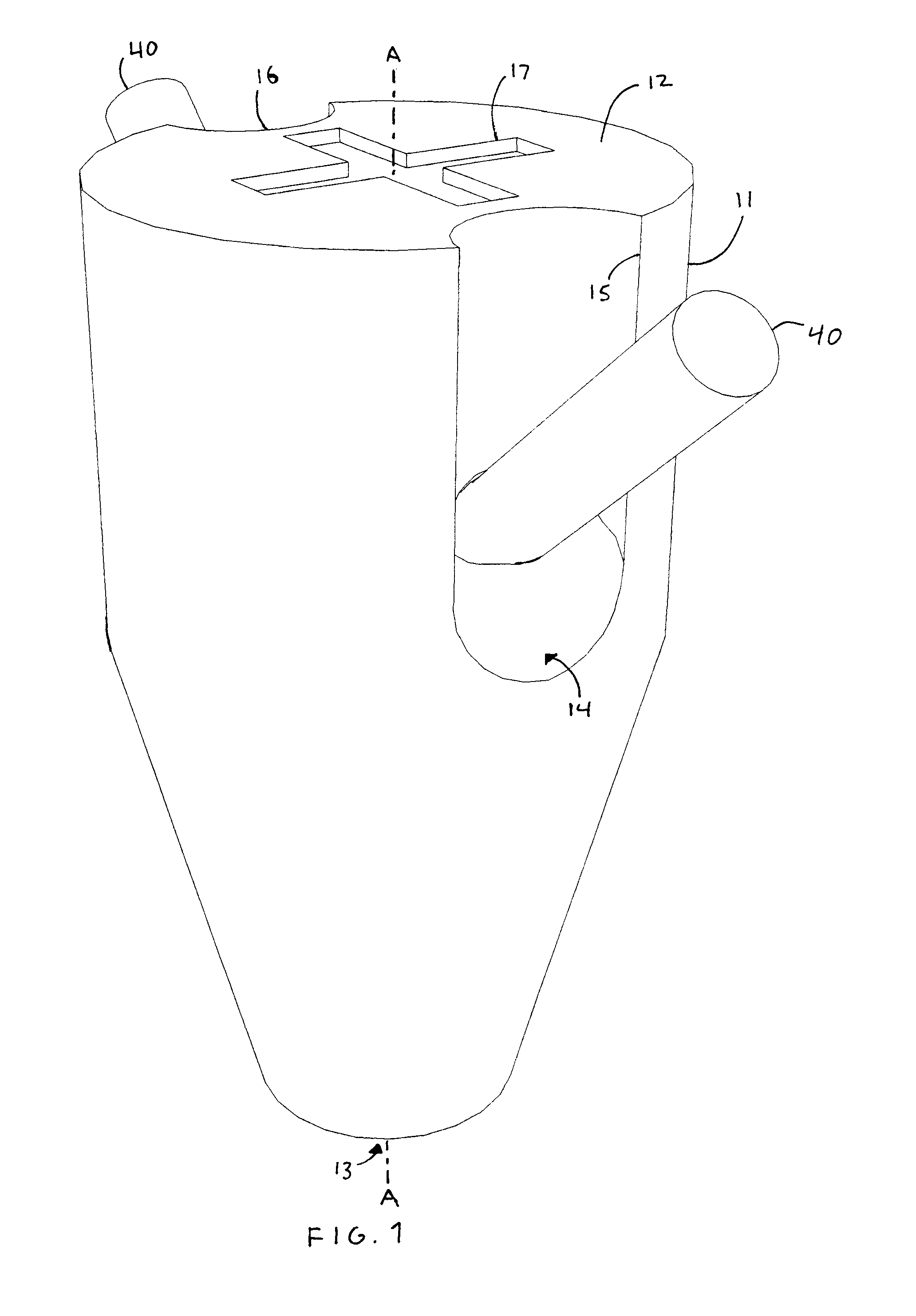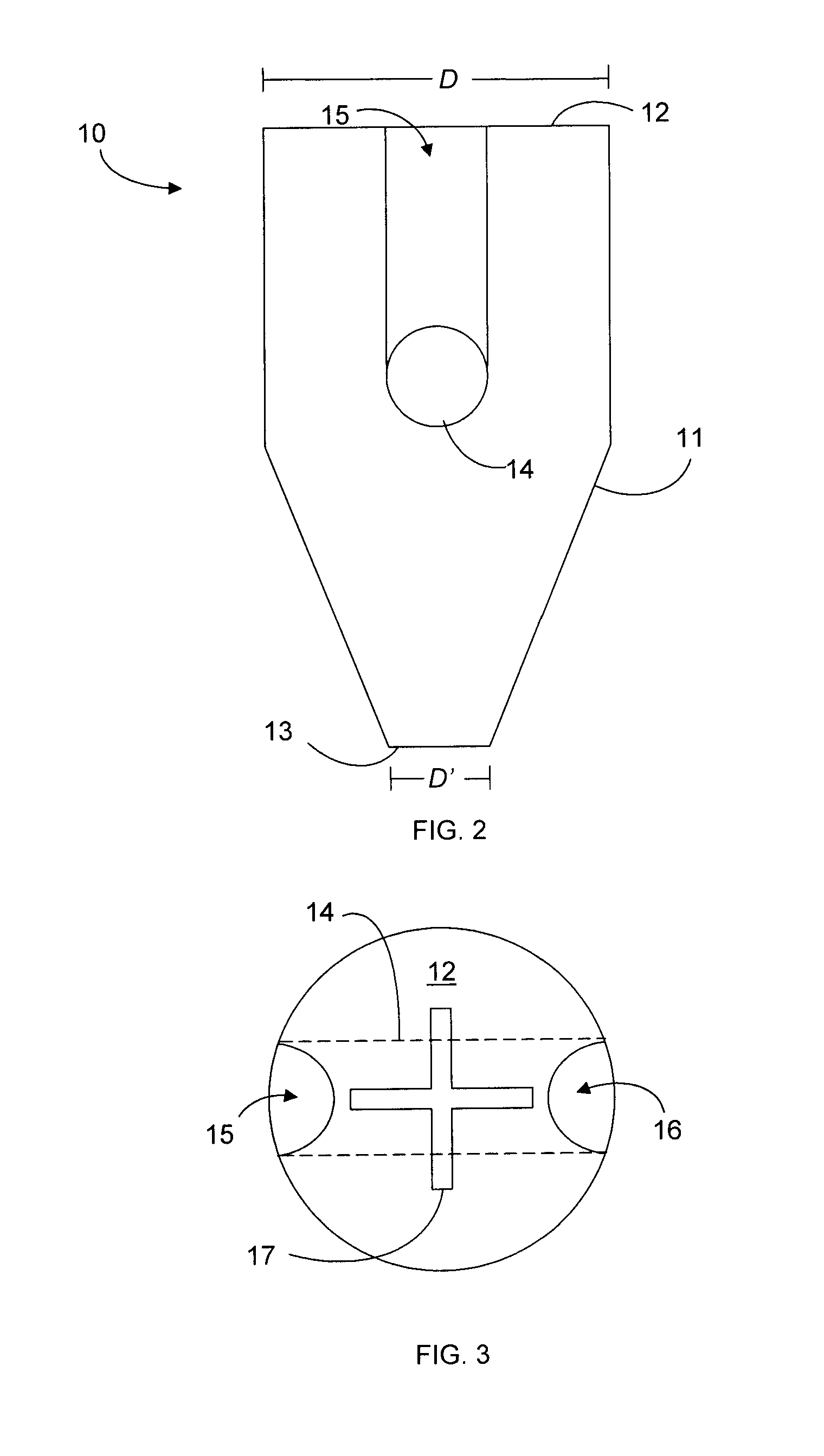Surgical System Including Suture Anchor and Insertion Device and Method for Using
- Summary
- Abstract
- Description
- Claims
- Application Information
AI Technical Summary
Benefits of technology
Problems solved by technology
Method used
Image
Examples
Embodiment Construction
[0024]Referring to FIGS. 1-6, there is illustrated the preferred embodiment of the present invention, designated generally as 10, which is a suture anchor that is implanted in a living bone so that one or more retained sutures 40 may be used to attach tissue to the bone. The anchor 10 comprises an anchor body 11 having a proximal end 12 and a distal end 13. The anchor 10 is inserted into the bone distal end 13 first. The anchor 10 may be any size and shape that is capable of anchoring the target tissue to the target bone, including cylindrical, prism-shaped with any two-dimensional shaped base, pyramidal, conal, or a combination of such shapes. For example, in a first embodiment illustrated in FIGS. 1-3, the anchor body 11 is substantially bullet-shaped, having a cylindrical portion starting at the proximal end 12 and tapering from a first diameter D to a second diameter D′ at the distal end 13. Preferably, the anchor body is cylindrical with planar ends 12, 13 that are orthogonal t...
PUM
 Login to View More
Login to View More Abstract
Description
Claims
Application Information
 Login to View More
Login to View More - R&D
- Intellectual Property
- Life Sciences
- Materials
- Tech Scout
- Unparalleled Data Quality
- Higher Quality Content
- 60% Fewer Hallucinations
Browse by: Latest US Patents, China's latest patents, Technical Efficacy Thesaurus, Application Domain, Technology Topic, Popular Technical Reports.
© 2025 PatSnap. All rights reserved.Legal|Privacy policy|Modern Slavery Act Transparency Statement|Sitemap|About US| Contact US: help@patsnap.com



